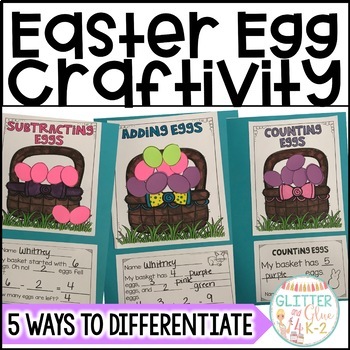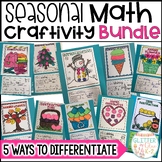Easter Math Craft Differentiated Egg Craftivity- Addition, Subtraction, Counting
- PDF
What educators are saying
Also included in
- Grab all of my seasonal math crafts bundled in one place! Each craft includes counting, addition (2 and 3 addends), subtraction, number bonds, and color words! I’ve included five different versions of each so you can use the option that fits your classroom’s needs best or you can differentiate. LeaPrice $32.99Original Price $47.00Save $14.01
Description
Grab this Easter egg math craft to reinforce counting, addition, subtraction, number bonds, and color words! I’ve included five different versions so you can use the option that fits your classroom’s needs best or you can differentiate. Grab this craft with the rest of my craftivities at a discounted price HERE!
What's included with this Easter egg math craft?
- Four examples
- Three pictures of baskets with headings and one without a heading.
- Easter Eggs-you can copy these on colored paper or students can color them.
- Explanation of the recording sheets.
- Five different options for recording sheets
- Updated on 12/26/21 to include: a number bond recording sheet
To use this Easter math craft...
- Print out the Easter basket page or pages. You can print them on colored paper or students can color them.
- Print and copy the eggs on different colors of paper.
- Choose your recording sheet and copy it.
- Students will add eggs to the Easter basket according to the directions of the math craft you have chosen.
- Students will fill out the recording sheet.
- Glue everything onto a large piece of paper to make the display.
Questions about this Easter math craftivity?
If you have any questions about this Easter math, please email me at glitterandglue4k2@gmail.com before purchasing.
Earn Credits Towards Future Purchases:
If you like this Easter math craft, please leave feedback at my TPT store. Remember each time you leave feedback, you earn credits for your future TPT purchase!
Copyright © 2018 Whitney Soboleski at Glitter and Glue 4 K-2. All rights reserved by author. Permission to copy for single classroom use only. Electronic distribution limited to single classroom use only. Not for public display.
Easter math craft, Easter craft, egg math craft, spring math, kindergarten, first grade






